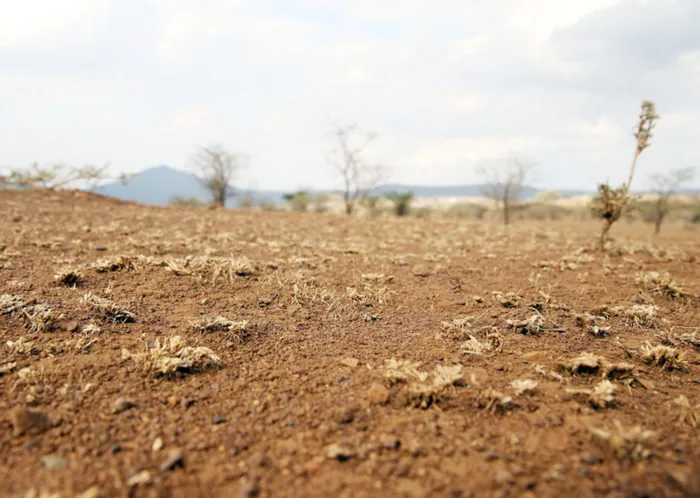Funds for drought relief not enough

DURBAN 03102015 Drought Hluhluwe. Picture:Jacques Naude DURBAN 03102015 Drought Hluhluwe. Picture:Jacques Naude
Johannesburg - Eight of the nine provinces have been declared drought disaster areas, but it has now emerged that the budget to address the crisis is substantially less than last year.
This was to help fund the national budget cuts needed to keep South Africa afloat in tough times. But even the drought money that was available last year wasn’t fully used.
Co-operative Governance and Traditional Affairs Minister Des van Rooyen announced on Thursday that all provinces, except Gauteng, had been declared states of disaster over the past 18 months. He was speaking at a meeting of the inter-ministerial task team on drought.
But a look at the numbers reveals that money allocated to the Department of Agriculture alone for 2016/17 was barely a third of what was in the budget last year.
Documents provided by the department said a little over R450 million was allocated for drought relief in 2015/16, comprising almost R194m of money allocated to each province as part of their equitable share allocation. The rest was from the department’s comprehensive agricultural support programme (Casp).
The National Treasury said the Department of Agriculture had used only R318m of this money by February, the end of the financial year. The department’s 2016/17 drought relief budget was substantially less, totalling just R148m.
This amount was made up almost completely by the provinces’ equitable share allocations, which saw no money allocated to KwaZulu-Natal, Mpumalanga, North West and the Northern Cape. The only province which received drought-relief money from Casp was the Western Cape, with only R11m.
“The cut in the Casp allocation seen in 2016/17 compared to 2015/16 is due to all programmes receiving a cut in allocations due to fiscal constraints. The allocations were made from the Treasury considering available resources,” explained departmental spokeswoman Bomikazi Molapo.
Treasury spokeswoman Phumza Macanda said that R1 billion was allocated by the government in the last financial year to deal with the drought. This included R502m for the Department of Water for drilling boreholes and buying water tankers, and R187m from the Department of Rural Development to distribute animal feed.
Money from the Department of Agriculture was used for moving cattle herds to state farms and transporting safe drinking water to drought-affected areas.
Ken Terry, the head of national disaster management at the Department of Co-operative Governance and Traditional Affairs, said almost R2bn had been spent on drought relief efforts since 2014.
He added it was difficult to get a clear indication of how much money was being used for drought relief because provinces and municipalities could reprioritise money from other projects as needed. “It is possible that a department can take funds from other projects and move them to disaster relief.”
Once a province had exhausted its resources on drought relief and declared a disaster, money from the Treasury’s contingency reserve could be allocated to assist.
A sum of R1m that was donated by Shell last month has pushed to R15m the donations AgriSA has raised since November for drought relief.
The organisation said Shell’s donation would be used to support farmers in Springbok and communities in Namaqualand.
AgriSA deputy executive director Christo van der Rheede said tons of feed, maize meal and food parcels had been distributed to farmers and farmworkers.